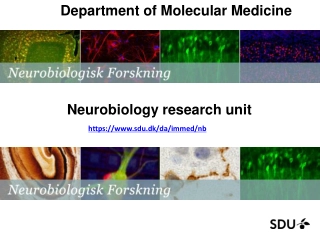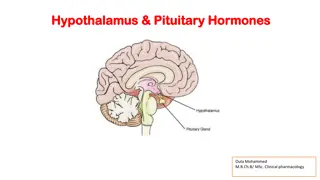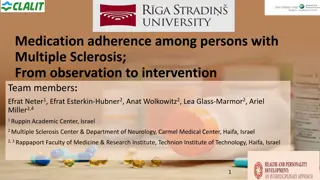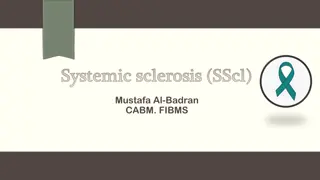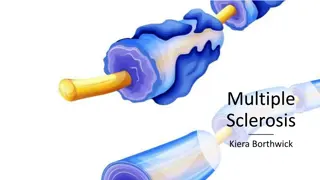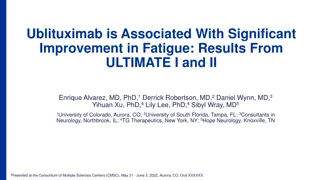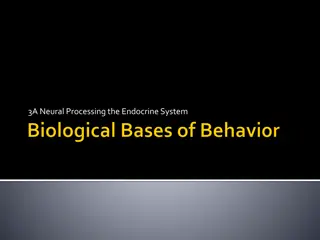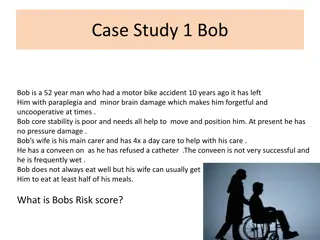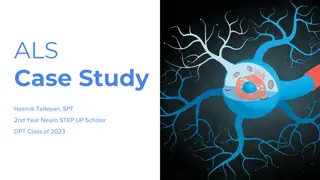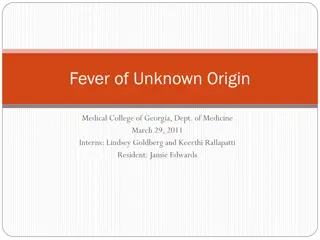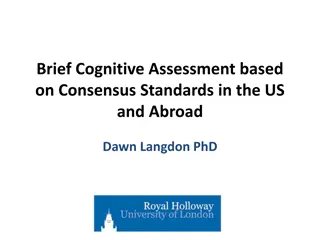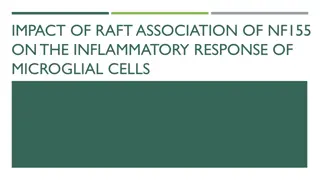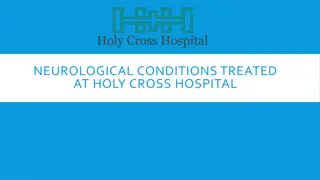
Multiple Sclerosis: Symptoms, Stages, and Treatment Insights
Explore the complex nature of Multiple Sclerosis (MS), a chronic inflammatory disease impacting the CNS. Learn about its symptoms, stages, immunopathogenesis, prognosis, and comparison with Guillain-Barr syndrome. Early diagnosis, treatment, and understanding its multifactorial causes are crucial for managing MS effectively.
Download Presentation

Please find below an Image/Link to download the presentation.
The content on the website is provided AS IS for your information and personal use only. It may not be sold, licensed, or shared on other websites without obtaining consent from the author. If you encounter any issues during the download, it is possible that the publisher has removed the file from their server.
You are allowed to download the files provided on this website for personal or commercial use, subject to the condition that they are used lawfully. All files are the property of their respective owners.
The content on the website is provided AS IS for your information and personal use only. It may not be sold, licensed, or shared on other websites without obtaining consent from the author.
E N D
Presentation Transcript
2 Multiple sclerosis Farimah Zadmajid M.Sc student of Immunology at LUMS
3 Outlines Introduction Symptoms Stages Immunopathogenesis Prognosis Treatment MS vs Guillain-Barr syndrome
4 Introduction A chronic, inflammatory, demyelinating disease of the CNS with an unpredictable course An intractable disease that cannot be completely cured Early diagnosis and appropriate treatment selection reduce long-term disease progression The exact cause of MS remains elusive but it is certainly a multifactorial disease Risk factors: Epstein bar virus infection low vitamin D status Cigarette smoking HLA-DRB1*15:01
5 Symptoms Demyelination in the brain and spinal cord leads to various symptoms: Visual impairment Numbness Motor paralysis Dizziness Dysuria In the early stages of the disease, the symptoms temporarily and spontaneously improve, but the recovery gradually deteriorates, and after effects gradually appear.
6 Symptoms Brain atrophy and cognitive impairment worsen from an early stage due to inflammation . Chronic inflammation is involved in the background of demyelination . Oligodendrocytes that wrap nerve cells are damaged by inflammation . In the early stage of the disease, the brain has reserve power, and even if inflammation is strongly observed, there may be no symptoms.
8 Symptoms Reserve power declines with age, and recovery gradually deteriorates, leaving aftereffects. Since disease activity is strongest in the early stages and then gradually declines, it is necessary to select an appropriate treatment from the early stages of the disease, even if the patient is asymptomatic.
9 Stages MS starts primarily as an inflammatory disease, but later neurodegeneration independent of inflammatory responses becomes the main mechanism for disease progression. RRMS: Usually, MS begins with a relapsing-remitting course. The relapses are characterized by an infiltration of peripheral immune cells across the BBB SO blocking leukocyte trafficking from the periphery to the CNS is effective to treat RRMS
10 Stages PPMS: In a minority of cases, the patients show progression from the onset without superimposed clinical relapses. When the disease is progressive, the majority of DMTs are inefficient probably because of the compartmentalization of the inflammation in the CNS.
11 Stages SPMS: Often, this relapsing-remitting course is followed by a phase of insidious worsening of neurologic function that is termed secondary progressive MS. There is broad variation in the time from the first clinical manifestations of MS to the onset of SPMS; the median time from onset of relapses to evolution to SPMS is approximately 20 years in untreated patients. Neurodegeneration is associated with SPMS patients which damage exceed their functional reserve capacity.
More BBB permeability in RRMS causes infiltration of peripheral immune cells across the BBB. Therefore the relapses occur in RRMS. Cortical lesions in SPMS are characterized by the absence of macrophage and leukocytic inflammatory infiltrates, and a dominant population of activated microglia.
13 Stages Quantitative comparison: In addition to MRI and histologic studies, PET studies added to the understanding of microglial activation. PET radioligand binding to 18 kDa translocator protein TSPO . TSPO is a marker of activated microglia and macrophages and, therefore, can be used to assess innate immune activation in MS. TSPO expression was higher in the thalamus and hippocampus in SPMS patients compared with RRMS patients. Increased TSPO levels correlate with disability is measured by EDSS score.
15 Stages Factors predicting progression to SPMS in patients with: Older age at MS onset Male sex Early high relapse frequency Longer disease duration Higher baseline EDSS score Higher lesion burden and spinal cord involvement, and lower brain volume.
16 Stages Many of the clinical features of MS are also observed in the normal course of aging, and it can be difficult for clinicians to determine whether findings indicate normal aging, the onset of SPMS, or a different age-related disease. During this diagnostic delay, patients may remain on therapies for RRMS that are ineffective for SPMS, resulting in unnecessary adverse effects and costs. Quantify EDSS scores more precisely and frequently than is commonly done in observational studies or in clinical practice.
17 Immunopathogenesis Role of T cells in MS: Using EAE models, encephalomyelitis was induced by the subcutaneous injection of peptides of myelin oligodendrocyte glycoprotein (MOG) with an adjuvant. In the early stages of EAE, Th17 cells, produce IL-17 and induce brain inflammation. After that period, lymphocytes called Eomes-positive helper T cells damage nerve cells and cause chronic inflammation in the brain.
18 Immunopathogenesis A transcription factor, JunB, is involved in the differentiation of T cells to Th17. This JunB deficiency abolishes autoimmune encephalomyelitis and no demyelination or immune cell infiltration, which causes symptoms, was observed. By qualitatively and quantitatively regulating JunB to alter the function of Th17 cells, the possibility of developing new treatments for autoimmune diseases was demonstrated. When EAE develops, many immune cells invade the brain. Among them, B cells and dendritic cells, which present antigen peptides to T cells, transform T cells that have invaded the brain into Eomes-positive helper T cells through the action of prolactin.
20 Immunopathogenesis After the period when symptoms such as tail paralysis, urinary incontinence, and quadriplegia appear, about two weeks after the peptide is inoculated, lymphocytes called Eomes-positive helper T cells , which express Eomes, a marker of cytotoxic T cells, despite showing helper T cell characteristics, damage nerve cells and cause chronic inflammation in the brain via releasing granzyme B. Drugs that suppress prolactin secretion also suppress the generation of Eomes- positive helper T cells in the brain and chronicity of EAE.
22 Immunopathogenesis Immunoregularory T cells: CD8-positive T cells, infiltrate brain lesions more than CD4-positive T cells and are associated with the degree of neuropathy. Recently, regulatory CD8-postitive T cells that suppress autoimmune pathology have attracted attention in animal models of MS due to PD-1 expression. The proportion of PD-1-positive cells is decreased in MS patients compared with healthy controls. In the CSF during inflammatory attacks, patients with a high proportion of PD-1+ CD8+ T cells respond better.
23 Immunopathogenesis The PD-1+ CD8+ T cell plays a role as an immunoregulatory cell via: IL-10 signaling system Suppressing co-receptors such as CTLA-4 Transcription factor c-Maf 1. 2. 3. In human CD8-positive T cells forced to express c-Maf, the expression of PD- 1,CTLA-4 and IL-10 is increased.
24 Immunopathogenesis Pathogenic T cells: RANKL expressed by pathogenic T cells. Pathogenic T cells and macrophages enter the central nervous tissue, by RANKL and act on astrocytes expressed RANK. Which leads to inflammation and demyelination in the central nerves. In a mouse EAE model in which the RANKL gene is disrupted, both the incidence and progression of the disease are strongly suppressed.
26 Immunopathogenesis APCs present Ag molecules to T cells in peripheral lymph nodes or spleen. Activated T cells circulate in the peripheral blood and cross the BBB. LFA-1 and VLA-4 adhere cell bodies onto endothelial cells by binding with ICAM-1 and VCAM-1 and cross the BBB. After entering the CNS, microglia, as an APC, present Ags. T cells release proinflammatory cytokines such as IFN- and TNF- . 1. 2. 3. 4. 5.
27 Immunopathogenesis 6. Cytokines promote the expression of MHC class II in microglia and IL-2 produced by microglia promotes the induction of Th1. 7. TNF- released from Th1 cells and macrophages damage myelin and oligodendrocytes. 8. Autoantibodies mainly composed of IgG bind to myelin and complement binds the Fc receptor of the antibody, activates the complement cascade, leading to phagocytosis by macrophages.
29 Immunopathogenesis Role of B cells in MS: Some CD-1d expressing CD-5 positive B cells called regulatory B cells, in spleen suppress inflammatory responses by IL-10 production when administered to mice. Using the EAE, it became clear that a group of CD138-positive cells expressing Blimp-1 called plasmablasts, found in the regional lymph nodes, specifically produce IL-10 and inhibit the function of dendritic cells. The condition of Blimp-1 knockout mice lacking this plasmablast is exacerbated.
30 Immunopathogenesis This plasmablast co-localizes mainly with dendritic cells at the boundary between B- cell follicles and T-cell regions. Under the culture supernatant of plasmablast, the production of inflammatory cytokines such as IL-6 and IL-12a by dendritic cells was decreased through the production of IL-10. When na ve T cells expressing MOG-specific T cell receptors and dendritic cells were co-cultured in plasmablast culture supernatant, differentiation into effector T cells was inhibited.
31 Immunopathogenesis The in vitro stimulation of B cells isolated from the peripheral blood of healthy individuals with CpG and cytokines induces differentiation into two types of plasmablasts: 1. weakly CD27-positive strongly CD27-positive 2. Only weakly CD27-positive plasmablasts could produce IL-10.
32 Immunopathogenesis Memory B cells mainly differentiated into plasmablasts that were strongly CD27- positive. Na ve B cells differentiate into weakly CD27-positive plasmablasts that produce IL-10 Plasmablasts play an important role in suppressing MS as regulatory B cells that produce IL-10.
34 Diagnosis MRI: Currently, the most reliable and routinely used diagnostic tool for MS is MRI. The presence of these lesions demonstrates inflammation with mixed pathology of neuro-axonal damage and demyelination. Routine MRIs lack sensitivity and specificity for neurodegeneration.
35 Diagnosis IgG-index: Among some patients whose disease was considered inactive by clinical scales and MRI, IgG-index were found to be significantly elevated. IgG index is the ratio of IgG to albumin in the CSF compared to that in the serum. Having a ratio greater than 0.7 usually results in a diagnosis of MS. Measuring IgG-index and oligoclonal bands is not very sensitive as it can be challenging to determine how many bands are present. they are not very specific, as anything causing chronic inflammation can result in elevated oligoclonal bands.
37 Diagnosis cNfL: Neurofilaments are cytoskeletal proteins released from damaged axons into the CSF and the blood. Increased cNfL levels are correlated with: Increased CD4+ T lymphocytes Inflammation Progression of RRMS to SPMS
38 Diagnosis There is a positive correlation between cNfL and serum NfL in MS patients, with cNFL levels 42-fold higher than sNFL levels. A benefit to using sNfL levels as opposed to cNfL levels is that serum levels are easier to obtain. Single molecular array has made measuring NfL concentration levels more clinically relevant. In general, MS patients also had higher sNfL levels before treatment compared to healthy controls.
39 Diagnosis Treatments with higher efficacies such as DMTs reduce sNfL levels. Levels of sNfL have been associated with lesion volumes on MRI scans. Some patients have several active MRI lesions with low sNfL, and some have no MRI lesions with high sNfL, indicating that other confounding factors can result in high sNfL levels.
40 Diagnosis Soluble CD40L: Comparing benign MS patients with SPMS ones, to look for progression-specific biomarkers by Luminex array indicated that plasma sCD40L was significantly increased in SPMS. While the combination of sCD40L and MCP1/CCL2 could be used to distinguish RRMS from SPMS.
41 Diagnosis Kappa Free Light Chain: KFLCs are produced during the synthesis of antibodies by plasma cells. CSF KFLCs have been proposed as an additional marker in diagnosis of MS with comparable sensitivity and specificity to oligoclonal bands. Specifically, kappa free light chain has been found to be increased in the CSF and serum of MS patients and correlated with disabilities in the future and disease progression.
42 Diagnosis Micro-RNA molecules: miRNA molecules can be measured in the CSF and serum of MS patients via PCR techniques. miRNAs are dysregulated in the immune system and CNS of MS patients, altering gene expression of various mRNA transcripts. In lesions in the brain of MS patients: miR-21, miR 22, miR-155, miR-210 and miR-233 are upregulated. miR-15a, miR-15b and miR-328 are downregulated.
43 Treatment Disease-modifying treatments: IFN- products as the first line in MS treatment: Enhances FoxP3 expression in CD4+CD25+ Treg cells. Downregulates HLA expression on APCs. Increases the production of anti-inflammatory cytokines. Reduces the level of ICAM-1, which is essential for T cells binding to endothelial cells and crossing BBB. 1. 2. 3. 4.
44 Treatment 5. Direct interaction between IFN- and CD4+ T cells may result in regulation of IL-17 expression via type I IFN receptor-mediated activation of STAT-1 signaling pathway and suppression of STAT3 activity. A double blind, placebo controlled trial demonstrated a significant reduction of brain lesions and delayed relapse rates. There is a great concern about multiple side effects including gastroenteritis, lymphopenia, bradycardia and atrioventricular blockage. It is recommended only for treatment of patients with no prior infection history.
45 Treatment Monoclonal antibody-based therapeutics: Fingolimod: An anti-inflammatory drug with the mechanism of degrading the S1P-R on lymphocytes. Restrains lymphocyte diapedesis into the CNS through the BBB. Natalizumab: Prevents lymphocyte adhesion to VCAM on endothelial cells. Blocks the migration of lymphocytes across the BBB and entering the CNS.
46 Treatment Rituximab and ocrelizumab: Target B-cell surface antigen CD20. Selectively deplete B-cells, while preserving the ability for B cell reconstitution. Alemtuzumab: Binds to CD52, expressed on activated T and B lymphocytes. Depletes lymphocytes by ADCC and CDC.
48 Treatment Myelin-reactive T cell vaccination: Injecting an attenuated form of myelin-reactive T-cells These cells are selected from MS donors and then re-injected after irradiation to induce protective immunity. This causes deletion or regulation of the pathogenic T-cells.
49 Treatment Early TCV trials reported decreased counts of the pathogenic, MBP-specific T-cells. Failure to meet endpoints in phase II clinical study using TCV in MS. The results suggest that polyclonal TCV is safe to use, able to induce measurable, long-lasting, anti-inflammatory immune effects in patients with advanced MS.
50 Treatment Targeting Tregs: Nitric oxide-induced CD4+CD25+FoxP3+ Tregs were shown to: Suppress the migration of immune cells through BBB. Decrease proliferation of Th17 and lower secretion of IL-17 in EAE mice model. Engineering antigen-specific Tregs such as MOG-targeting and FoxP3+ CAR-T cells, in MS reduced IL-12 and IFN- production and suppression of EAE symptoms.

